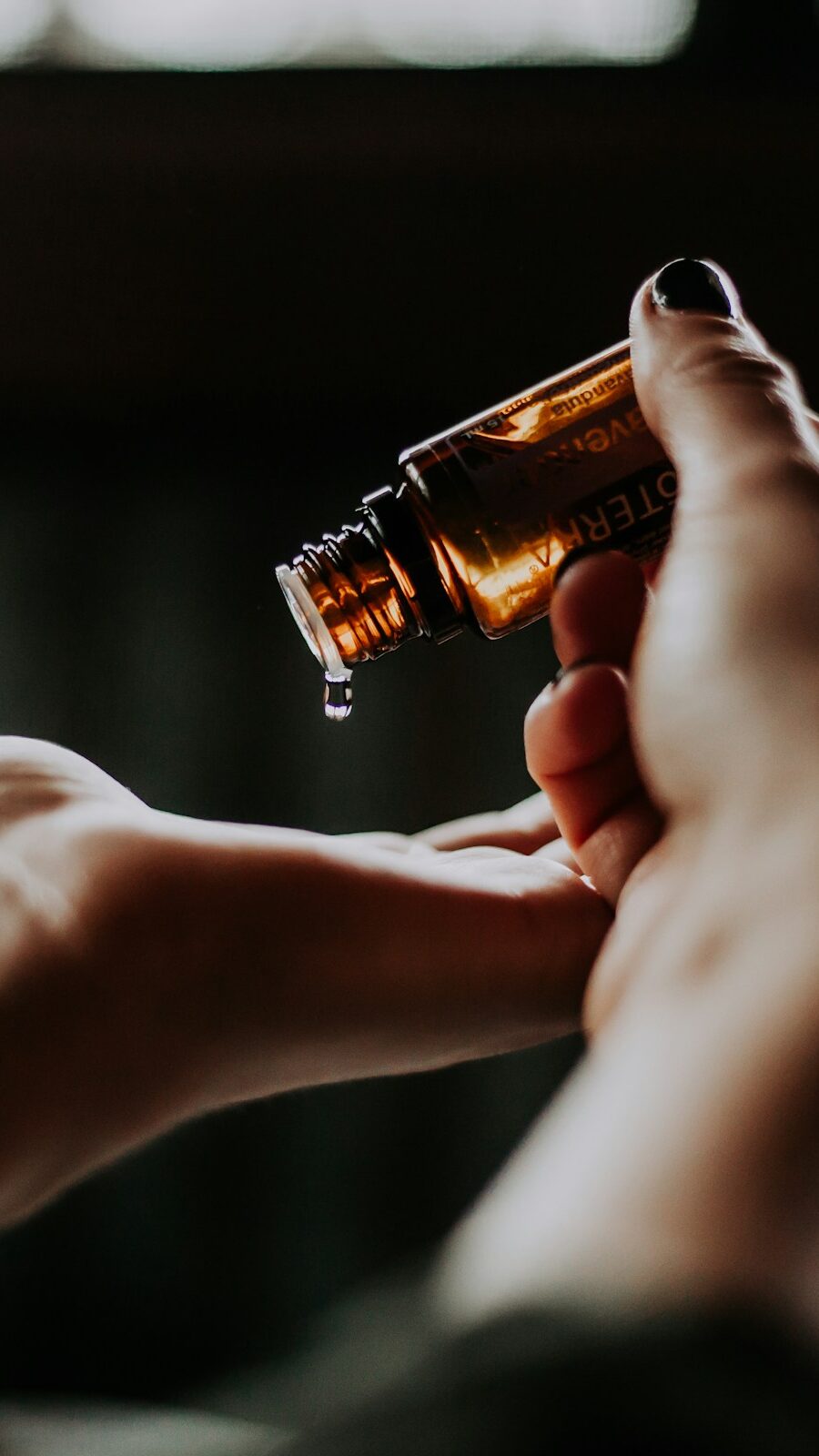5 Simple Steps to Prevent And Fade Stretch Marks
Stretch marks are a common concern for many individuals, particularly during periods of rapid growth, such as pregnancy or puberty. These marks can appear on various parts of the body, including the abdomen, thighs, hips, breasts, and arms.
While they are not harmful, they can affect one’s self-esteem and confidence. Fortunately, there are steps you can take to prevent and fade stretch marks effectively. In this post, we will discuss five simple steps that you can take to help you in this regard.
Busy? Save this pin for later.

1. Keep your body hydrated
Hydration plays a crucial role in maintaining the elasticity of your skin. When your body is well-hydrated, your skin has a better ability to stretch and bounce back, reducing the likelihood of stretch marks.

It is recommended to drink at least eight glasses of water per day to keep your body hydrated.
In addition to water, incorporating hydrating foods into your diet can also contribute to maintaining skin elasticity.
Foods such as watermelon, cucumbers, oranges, and other fruits and vegetables with high water content can help keep your skin supple and prevent stretch marks.
Furthermore, using moisturizers and creams that contain hydrating ingredients like hyaluronic acid can provide an extra layer of hydration to your skin, promoting its elasticity and reducing the appearance of stretch marks.
2. Maintain a healthy diet
Eating a balanced and nutritious diet is not only important for your overall well-being but also for the health of your skin.

Certain vitamins and minerals play a vital role in maintaining the elasticity and strength of your skin, making it less prone to stretch marks.
Include foods rich in vitamins A, C, and E, as well as zinc and silica, into your diet. These nutrients can be found in fruits, vegetables, whole grains, lean proteins, and nuts.
By consuming a variety of these foods, you provide your body with the necessary building blocks to keep your skin healthy and resilient.
On the other hand, it is essential to avoid processed and sugary foods as they can negatively impact the health of your skin and increase the risk of developing stretch marks.
You Might Also Like: 5 Biggest Skincare Mistakes That Are Causing You Acne
3. Exercise regularly
Regular exercise not only helps to keep your body fit and healthy but also contributes to improving the quality and appearance of your skin.

Engaging in activities that promote blood circulation and muscle tone can help prevent stretch marks. Focus on exercises that target the areas most prone to stretch marks, such as the abdomen, thighs, and hips.
Practice strength training exercises in your routine to build muscle and improve skin elasticity. Furthermore, including yoga or Pilates into your exercise regimen can enhance flexibility and promote healthy skin.
These practices help to keep your skin supple, improve blood flow, and reduce the likelihood of stretch marks.
Some exercises that you can include in your routine are:
- Planks: This exercise targets the abdominal muscles and helps to strengthen and tone the area.
- Squats: Squats target the muscles in the thighs and hips, which are common areas for stretch marks to appear. By strengthening these muscles, you can improve skin elasticity and reduce the risk of stretch marks.
- Lunges: Lunges are another great exercise for the thighs and hips. They help to tone and strengthen these areas, making them less prone to stretch marks.
- Yoga or Pilates: These practices focus on flexibility, strength, and mindfulness. By incorporating yoga or Pilates into your routine, you can improve overall body strength and promote healthy skin.
4. Massage with natural oils
Massaging your skin with natural oils can stimulate blood flow, boost collagen production, and improve the overall health of your skin. Certain oils are particularly beneficial in preventing and fading stretch marks.

Almond oil, coconut oil, olive oil, and rosehip oil are known for their moisturizing and nourishing properties. Gently massage the affected areas with your chosen oil for about 10-15 minutes daily.
This can help improve skin elasticity, reduce the appearance of existing stretch marks, and prevent new ones from forming.
The massaging action increases blood circulation to the area and encourages the production of collagen, which helps to improve the elasticity and texture of the skin.
5. Use specialized creams and treatments
There are various creams and treatments available in the market that specifically target stretch marks. These products often contain ingredients like retinoids, hyaluronic acid, vitamin C, or peptides.

Retinoids, for example, promote collagen production and improve skin elasticity. Hyaluronic acid helps to hydrate the skin and maintain its moisture balance.
Vitamin C is known for its antioxidant properties and can help to fade stretch marks. Peptides are amino acids that can stimulate collagen production and improve the texture of the skin.
When using these creams or treatments, it is important to follow the instructions provided and be consistent in your usage to achieve the best results.
Consulting with a dermatologist or skincare professional can also help you find the most suitable products for your specific needs.
In conclusion, stretch marks may be a common concern, but they don’t have to be permanent. By following these five simple steps, namely keeping your body hydrated, maintaining a healthy diet, exercising regularly, massaging with natural oils, and using specialized creams and treatments, you can prevent and fade stretch marks effectively.
Don’t forget that consistency and patience are key when it comes to improving the appearance of stretch marks. Embrace your body and take care of your skin, and you will see gradual improvement over time.
You Might Also Like: What is Dermarolling and Is It Good for Your Skin?
FAQ
Q: How can I prevent stretch marks?
A: To prevent stretch marks, it is important to keep your body hydrated by drinking enough water and incorporating hydrating foods into your diet.
Maintaining a healthy diet rich in vitamins A, C, and E, as well as zinc and silica, can also help prevent stretch marks.
Additionally, regular exercise, focusing on targeted areas prone to stretch marks, can improve skin elasticity and reduce the risk of developing stretch marks.
Massaging your skin with natural oils and using specialized creams and treatments can also be beneficial in preventing stretch marks.
Q: Can a healthy diet help fade stretch marks?
A: Yes, a balanced and nutritious diet can help fade stretch marks. By consuming foods rich in vitamins A, C, and E, as well as zinc and silica, you provide your body with the necessary building blocks to maintain the elasticity and strength of your skin.
These nutrients can be found in fruits, vegetables, whole grains, lean proteins, and nuts. Avoiding processed and sugary foods is also important, as they can negatively impact the health of your skin and increase the risk of developing stretch marks.
Q: What exercises can I do to prevent stretch marks?
A: There are several exercises you can incorporate into your routine to prevent stretch marks. Planks target the abdominal muscles, squats and lunges target the muscles in the thighs and hips, and yoga or Pilates focuses on flexibility and strength.
By strengthening and toning these areas, you can improve skin elasticity and reduce the risk of stretch marks.
Q: How can I fade stretch marks with natural oils?
A: Massaging your skin with natural oils can stimulate blood flow, boost collagen production, and improve the overall health of your skin.
Almond oil, coconut oil, olive oil, and rosehip oil are particularly beneficial for preventing and fading stretch marks.
Gently massage the affected areas with your chosen oil for about 10-15 minutes daily to improve skin elasticity, reduce the appearance of existing stretch marks, and prevent new ones from forming.




